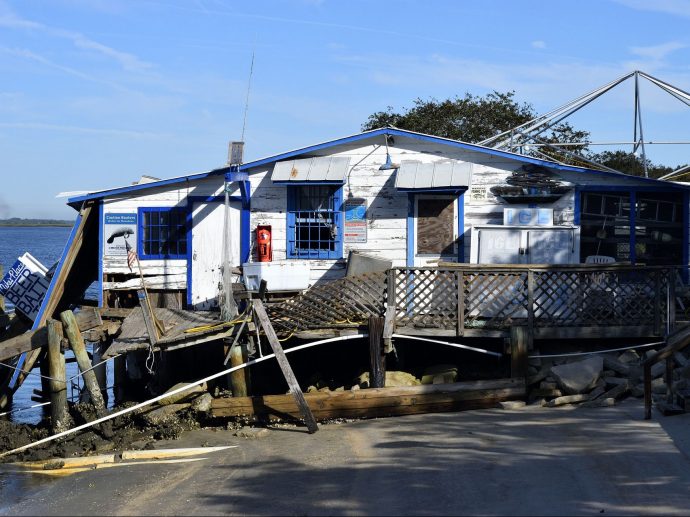Categories more
- Adventures (17)
- Arts / Collectables (15)
- Automotive (37)
- Aviation (11)
- Bath, Body, & Health (77)
- Children (6)
- Cigars / Spirits (32)
- Cuisine (16)
- Design/Architecture (22)
- Electronics (13)
- Entertainment (4)
- Event Planning (5)
- Fashion (46)
- Finance (9)
- Gifts / Misc (6)
- Home Decor (45)
- Jewelry (41)
- Pets (3)
- Philanthropy (1)
- Real Estate (16)
- Services (23)
- Sports / Golf (14)
- Vacation / Travel (60)
- Watches / Pens (15)
- Wines / Vines (24)
- Yachting / Boating (17)
How to Stop Your Home's Beautiful Carpets Being Ruined by Water Damage
Published
06/24/2023Your home's carpets are a significant investment, and you love how they contribute to the ambiance of your living spaces. Unfortunately, nothing spells disaster for carpets quite like water damage.
Whether it's a sudden flood from a burst pipe or ongoing moisture issues from leaks or high humidity, water can quickly turn your beautiful carpets into a sopping mess with lingering mold and mildew issues, says Water Damage Specialist.
Feeling anxious about the potential water damage that could hurt your cherished carpets? Why not take matters into your own hands proactively? Here's a heartening sequence of actions you can undertake to shield both your beloved carpet and warm, welcoming abode from harm's way.
Addressing Common Causes of Water Damage
Before tackling specific strategies for protecting your carpets, you need to know what causes water damage in the first place. By addressing these common causes proactively, you'll be better prepared for the instances when water does make its way onto your carpets:
- Burst pipes: Aging pipes can suddenly rupture, causing considerable flooding in minutes. Prevent this problem by inspecting and replacing pipes as needed.
- Leaking appliances: Ensure that any appliances connected to water lines are not leaking; this includes washing machines, refrigerators with ice makers and dishwashers.
- Flooding: Install sump pumps in areas prone to flooding (like basements), maintain gutters and seal basement walls that may allow excess moisture in during heavy rains.
- High humidity: Wet carpets can also result from high humidity in your home, so ensure that proper ventilation and air conditioning are in place to prevent dampness.
Implementing Preventative Measures for Your Carpets
Now that you're aware of the common causes of water damage, follow these specific preventative measures to reduce the risk of ruin on your carpet:
Maintain a Safe Distance Between Carpets and Water Sources
Ensuring there's adequate space between your carpets and any sources of water will drastically reduce the likelihood of disaster. In areas where water is commonplace, such as bathrooms and kitchens, avoid placing wall-to-wall carpeting.
Instead, opt for tile or other waterproof flooring materials and use area rugs that are easier to clean up after spills or can be replaced if damaged.
Invest in Carpet Padding with Moisture Barriers
By choosing carpet padding with built-in moisture barriers, you'll not only protect the carpet fibers themselves from water damage but also the underlying subfloor according to the page here. This type of padding prevents any liquids from seeping through to either surface, thereby reducing potential costly repairs to both flooring layers.
Regularly Inspect Your Homes Water Lines
An ounce of prevention is worth a pound of cure - frequently check all accessible plumbing for signs of leaks or excessive wear. Additionally, ensure that water lines connected to appliances like washing machines and refrigerators are regularly inspected for signs of deterioration or leaking.
Quick Action is Key if Water Damage Occurs
If, despite your best efforts, water finds its way onto your carpets, immediate response is crucial. To mitigate damage and increase your chances of salvaging your flooring investment:
- Stop the source of water: Turn off any water supply as soon as possible - this may include shutting off main valves or dealing with seepage from outside sources like rain or melted snow.
- Remove excess water: Promptly soak up standing water using towels or other absorbent materials; larger flooded areas may require specialized equipment like wet/dry vacuums or pumps.
- Dry out flooring: In cases of minor flooding where subfloors are not heavily affected, professional-grade carpet dryers can be used to remove remaining moisture from fibers rapidly. For more severe flooding where underlying structures have been compromised, carpets should be lifted to adequately dry and treat both layers to prevent issues like rotting subfloors and lingering mold contamination.
- Contact professional help: Don’t hesitate to reach out to a reliable water damage specialist who can assess the situation and guide you through the appropriate steps needed to restore your carpets and mitigate any other related damages.
Conclusion
Safeguarding your home's beautiful carpets from water damage requires preparation, prevention measures, and quick action in case damage does occur. By identifying common causes of water damage like broken pipes or high humidity, you'll be better equipped to prevent mishaps before they happen.
Combine this knowledge with specific preventative strategies for carpets like maintaining distance between water sources or utilizing moisture-resistant padding to mitigate potential problems even further.
Lastly, should unwanted H2O make its way onto your flooring, immediate action is key in ensuring minimal damage occurs. If unsure how best to proceed at any point, don't hesitate to contact a reputable water damage specialist for advice tailored to your situation.















